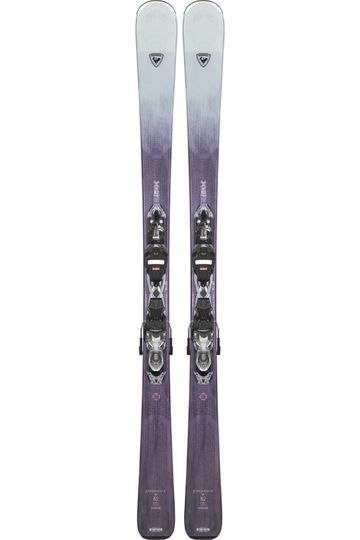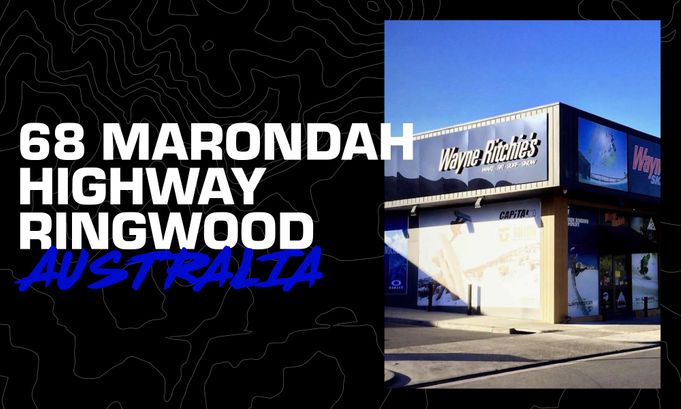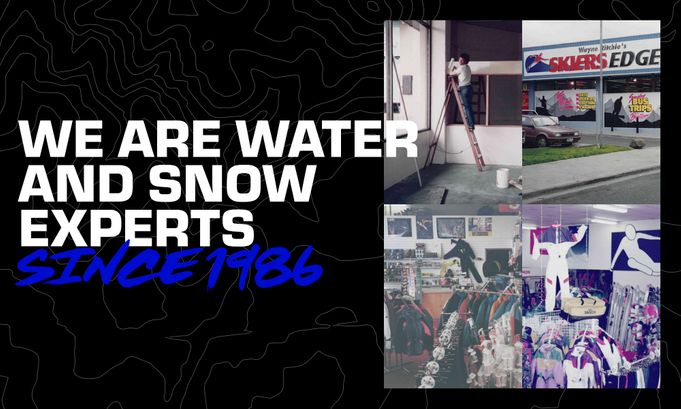Alpine skiing first became popular in the late 19th century in the Alpine regions of Europe, particularly in Switzerland and Austria. Early skis were made of wood and were quite long, and skiers used a single pole for balance and control. Over the years, skiing has evolved into a popular recreational activity and competitive sport, with numerous variations and disciplines. Today, skis are made of a variety of materials including wood, metal, and composite materials. They come in a range of sizes, shapes, and designs to suit different types of skiing and individual preferences. Choosing a new pair of snow skis can be a bit overwhelming, but there are a few key factors to consider that will help you make the right decision.
- TYPE OF SKIING: First, think about the type of skiing you will be doing. Are you planning to ski mostly on groomed slopes, or are you looking for a ski that can handle powder and off-piste conditions?
- SKILL LEVEL: Another important factor to consider is your skill level. Are you a beginner, intermediate, or advanced skier? Different skis are designed for different levels of skill.
- SHAPE AND SIDECUT: The shape and sidecut of a ski will affect its turning ability and stability. The radius of a ski determines how tight the ski will turn when laid on its edge. A slalom style ski will have a short-turning radius of 11m while a giant slalom ski will have a long turn radius of 30m.
- FLEX: The flex of a ski will affect its stability and responsiveness. Skis with a stiffer flex will be more stable at high speeds, while skis with a softer flex will be more forgiving and easier to control.
- LENGTH: The length of the ski you choose is also important. Skis that are too long can be difficult to control, while skis that are too short may not provide enough stability.
CATEGORIES:
With these factors considered, it is beneficial to understand the categories of snow skis that are available to help narrow down your options. It is important to note that some skis can fall into multiple categories, such as a freestyle ski that can ridden across a variety of terrain outside of the terrain park.
- ALL-MOUNTAIN: These skis are designed for a wide range of conditions and terrain and are a good choice for skiers who want a versatile ski that can handle everything from groomed trails to powder and off-piste skiing.
- CARVE/ON-PISTE: Carve skis typically have a more pronounced sidecut which allows them to turn more easily, and a stiffer flex, which allows them to hold an edge better during turns. They are typically used on groomed slopes and suitable for more controlled, aggressive skiing.
- RACE: These skis are designed for high-speed, high-performance skiing and are typically longer, narrower, and stiffer than other types of skis. They are designed to cut through the snow and maintain stability at high speeds.
- FREESTYLE: These skis are designed for park and pipe skiing and are typically softer, and more flexible than other types of skis. They feature a twin-tip design, which allows for skiing and landing backwards.
- FREERIDE/BACKCOUNTRY: These skis are designed for off-piste and backcountry skiing and are wider and feature more rocker than all-mountain skis to provide better flotation in deep snow.
CONSTRUCTION:
Snow skis are available in different constructions. Some constructions are better than others depending on the skier's skill level, terrain, and style of skiing.
- CAP CONSTRUCTION: A combination of a hard plastic cap on top of the ski and a foam or timber core. It's the most affordable, easy to manufacture and it gives skis a good balance of durability, weight, and performance.
- SIDEWALL/SANDWICH CONSTRUCTION: Features a wood core sandwiched between the top sheet and base with a hard plastic layer along the edges of the ski known as a sidewall. It gives the ski greater edge hold, stability, and durability best for demanding skiers, however, is more expensive to manufacture.
MATERIALS:
Snow skis are typically made from a combination of different materials, including wood, metal, and synthetic materials. Each material offers its own unique set of properties, which can affect the performance and durability of the ski.
- WOOD: Wood is the traditional core material used in skis. It offers a good balance of strength and flexibility, and it is relatively lightweight. Wood cores can be made from different types of wood, such as ash, poplar, and Paulownia, each with their own unique properties.
- METAL: Metal is often used in the construction of skis to increase strength and stability. The most common metals used in skis are aluminium and titanium. They are strong and durable, but often add weight to the ski.
- SYNTHETICS: Synthetic materials like foam and plastic are also used in the construction of skis. They are lightweight and can be used to create a wide range of flex patterns. They can also be used to create the ski's top sheet, the material that covers the core and gives skis their unique graphics and colours.
- CARBON FIBRE: Carbon fibre is a very strong and lightweight material that can be used in the construction of skis, it's typically used in high-performance skis, it can be used in the core, in the edges or in the top sheet, it can also be used in combination with other materials to create a specific flex pattern.
SIZE GUIDE:
Ski manufacturers typically recommend a specific size range for skiers based on their height and weight. This can be a good starting point, but keep in mind that other factors such as ability level and preferred terrain also play a role in determining the appropriate ski size. A general rule of thumb is to stand a ski on its tail. A ski that reaches your chin or nose is suitable for a beginner while a ski that reaches your eyes or forehead height is suitable for an advanced skier. It's also worth noting that some skiers prefer to use skis that are slightly longer or shorter than recommended, depending on their own personal preference and the type of skiing they will be doing.
- ABILITY: The ability level is important when choosing the size of your skis. Advanced skiers may prefer a longer ski for more stability, while more novice skiers may prefer a shorter ski for more manoeuvrability.
- TERRAIN: The type of terrain you will be skiing on can also affect the appropriate ski size. For example, skis used for backcountry or powder skiing are typically longer than skis used for groomed slopes.
Rossignol 2025 Experience W 82 Basalt W/Xp Ladies Snow Skis
- Online
- Ringwood Store
Description
Push your skills. Explore more. The women's Experience 82 Basalt ski brings a lightweight build and predictable edge control for all-resort skiing. The flex is tuned to deliver a relaxed feel and effortless carving. An paulownia wood core reduces overall weight, while basalt layers absorb vibration for a smooth ride. The confidence-boosting control of our Drive Tip design works with the sidecut and full sidewall construction for smooth turn initiation and a powerful edge through the entire turn. An 82mm waist balances a quick feel edge to edge with the width to handle varied conditions. Accessible, Responsive Flex Active Flex offers a responsive feel for intuitive control Fast Engagement, Fluid Carving All Trail Sidecut delivers a responsive feel with quick edge engagement and powerful, consistent carving Confident, Vibration-Free Control Drive Tip Solution blends directional fibers in the tip with soft dampening material through the forebody to absorb vibration for confidence-boosting control Lightweight Stability Basalt fibers enhance power and stability while removing vibrations Lightweight Agility Paulownia wood core reduces ski weight for a balance of weight, power and maneuverability Maximum Edge Control Rectangular Sidewall construction delivers race-proven grip, precision and power.
Specifications
• Ski System: Xpress
• Ski Material Core: PAULOWNIA WOOD CORE
• Ski Material Other: MINICAP, HARDTOP
• Ski Material Reinforcements: BASALT FIBER V2
• Ski Profile Construction: RECTANGULAR FULL SIDEWALL
• Ski Profile Rocker: ALL TRAIL ROCKER
• Ski Radius: 10 - 11 - 13 - 14
• Ski Sidecuts Dimensions: 127-82-115 - 127-82-115 - 127-82-115 - 127-82-115
• Ski Weight: 2.9 - 3.1 - 3.2 - 3.4
Shipping ETA
| DESTINATION | Small Items < 1kg | Large Items |
| Melbourne Metro | 1 Business Day | 1 Business Day |
| Victoria | 1-3 Business Days | 1-3 Business Days |
| New South Wales | 1-3 Business Days | 1-3 Business Days |
| Queensland | 1-3 Business Days | 1-3 Business Days |
| South Australia | 1-3 Business Days | 1-3 Business Days |
| Tasmania | 2-5 Business Days | 2-5 Business Days |
| Western Australia | 2-5 Business Days | 2-5 Business Days |
| Northern Territory | 3-7 Business Days | 3-7 Business Days |
Warranty
Products sold by Wayne Ritchie's come with consumer guarantees and a minimum manufacturer warranty of 12 months. A manufacturers warranty covers defects that occur during the manufacturing process that result in the product having poor performance or being unfit for use. The manufacturers' warranty does not cover misuse or accidental damage. Minor faults such as delaminations, broken clips, ratchets, laces and tube inners or other replaceable parts will be repaired in a reasonable time frame. Serious faults that hinder use and cannot be repaired such as cracks and tears will be replaced, or a store credit issued for the same value. In the event of a defect, please visit Wayne Ritchies in-store, or submit via the online form. Purchase history must be provided for all claims so please submit your original purchase receipt or invoice. In some cases, a bank statement showing the original purchase date is applicable.
Shipping & Returns
SHIPPING POLICY
Large items over 1 metre cannot be shipped to PO Boxes or Parcel Lockers. Large items are shipped by courier so please provide us with a business or street address where someone will be present at the delivery address between 9am-5pm to sign for the delivery. If you are not present when delivery is attempted we cannot guarantee it will be re-delivered in a timely manner. It may be returned to us or allocated to a third party company which we have no control over, and a re-delivery fee may be incurred in some instances. Once your order has been shipped you will be provided with a tracking number to follow the progress of your order online. It is the full responsibility of the receiver to ensure someone is present at the specified delivery address as there will be no compensation by Wayne Ritchie's for lost or missing parcels. All deliveries notated with "leave at front door" or similar will be left at the buyer's risk, no responsibility will be taken by Wayne Ritchie's for lost or missing parcels.
Incorrect addresses: In the event that you enter an incorrect or invalid address causing your order to be returned to us, a $20 fee will be charged before we can re-send the order to you a second time.
Pick-up in-store: Your click and collect order will typically be ready with 4 hours of placing your online order (during business hours) but this timeframe may differ on weekends and during late night trade periods. PLEASE DO NOT arrive to collect your order until you have received a pick-up confirmation email.
Pre-order items: we cannot provide guaranteed shipping dates but pre-orders are given priority and will be shipped immediately the same day the goods arrive in our warehouse.
We endeavour to keep our extensive online range as up-to-date as possible but if you cannot find what you're looking for, please Contact Us and we will do our best to find it for you.
RETURNS POLICY
Wayne Ritchie's Skiers Edge offers free returns for items that are faulty, not as described or incorrect item shipped. Please return the item to us within 14 days of date of purchase and will will issue a refund or replacement. If you change your mind, an item does not fit or the wrong size is ordered it can be returned to us in the brand new condition you received it and we will happily exchange it or issue a refund. PLEASE NOTE: it is the buyer's responsibility to pay return shipping on change of mind, items that do not fit or have been incorrectly ordered.
*Conditions Apply.
PLEASE NOTE:
- Sale items are offered at significantly discounted prices so please choose carefully as we WILL NOT accept exchanges or returns on sale items.
- Wayne Ritchie's reserves the right to cancel any online order without notice.
- It is the responsibility of the customer to adhere to our terms and conditions as stated above.
- To view our full terms and conidtions Click Here
Visit Us in Store
Experience the largest Australian water sports and snow sports pro-shop in-store! We welcome our customers to enjoy the most immersive range of skis, boards and accessories.
Shipping ETA & Returns
Enjoy free express shipping on all orders over $100, or just $12.95 express shipping on all orders under $100. We'll dispatch orders on the same day if ordered before 12pm.
Get in Touch
We're here to help! If you've got a question regarding our products or services, click below for our phone and email contact details or send us a message via Facebook Messager.
About Us
Wayne Ritchie's is a specialty watersports and snowsports retailer, family owned and operated since 1986. We pride ourselves on an unrivalled customer experience.







